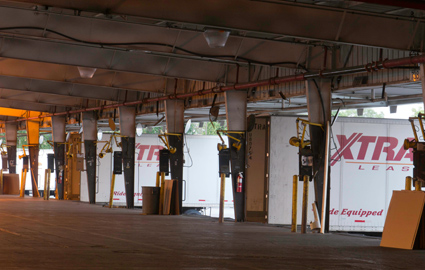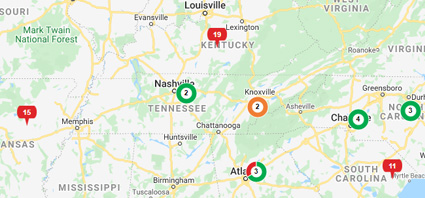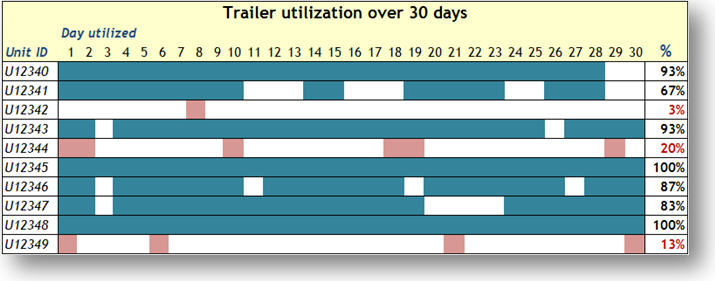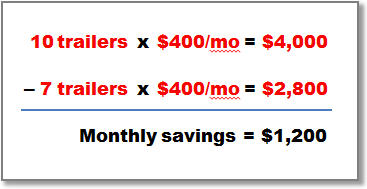
Dormancy: Are You Losing Revenue and Paying to Do It?
Are any of your rental trailers just sitting around idle? That’s dormancy. And when rental trailers are dormant, you’re not only losing revenue, but paying to do it! So how can you make sure your rentals are working for you?
You look at two measurements: trailer dormancy and trailer utilization.
Trailer dormancy tells you how long a trailer has been sitting. This helps you react to a specific situation, like a rented trailer that’s been forgotten for weeks and needs to be returned or put back to use.
Trailer utilization tells you how a trailer has been used—or not used—over a period of time. This helps you identify trends, which, in turn, help you forecast your future rental needs.
Monitor trailer dormancy and utilization
When you monitor dormancy and utilization you’re better positioned to:
- React quickly to idle equipment and get it returned before it becomes a drain on your bottom line.
- Keep your rented/leased trailers earning money for you.
- Improve your estimates of how many supplemental trailers you or your customers need and when/how long you’ll need them.
Don’t worry. Gathering trailer dormancy and utilization data isn’t hard to do. Most trailer tracking providers have reports you can run on demand or subscribe to.
And good tracking systems can show you dormancy and utilization at a glance. Green is good, red not so much:

What trailer dormancy and utilization numbers look like
Here’s a sample chart that shows these two measurements. The teal indicates utilization and the red indicates dormancy.
What the heck’s going on with Unit U12342?

What could possibly happen if you check a report like this at least every month?
Well, you’ll become aware of under-utilized trailers and can do something about them quickly. And the U12342s of the world won’t get a chance to slack off.
Everyone who’s willing to act on trailer dormancy data will save money
If you rent fewer than 30 trailers, you only have to bring back ONE to make a significant impact on your bottom line. This is the type of low-hanging fruit that can feed your bottom line.
Why not prove it for yourself? Gather 30 days of utilization data for your trailer fleet. What percentage of those 30 days was each rental trailer working? How much money could you save by returning trailers that were idle most of the time
Let’s see.
If we use these figures: 
- 10 trailers currently rented
- 3 trailers dormant for most of the month
- $400 monthly rental rate
we arrive at a savings of $1,200 from returning three idle trailers.
The savings is the difference between what you’re currently paying for trailer rental and what you’d pay for the number of trailers you’re actually using.
Here’s the equation we used:
# of trailers currently rented * monthly rate - # of trailers actually used * monthly rate
Now go ahead and plug in YOUR numbers to see how much you could save.
Act on trailer dormancy
You can’t save money unless you act.
So run a utilization report from your trailer tracking system. Then act on the easy target—the trailer that’s been dormant or under-utilized for 30 days on Customer XYZ’s yard.
Then work your way up to more strategic decisions that you can make with greater confidence because they’re based on actual usage data.
The first step is easy: take a look at utilization.
Here are some links with more information on real-time trailer tracking:
- Check out this article while you’re here: 7 ways today’s trailer tracking can increase your profit.
- You can find more information on trailer tracking at XTRA Lease on our trailer tracking web page.
- You may also like the articles The #1 way to return rented trailers fast and Rent fewer trailers.
- This real-life application of trailer tracking is interesting: Swift Transportation success story.